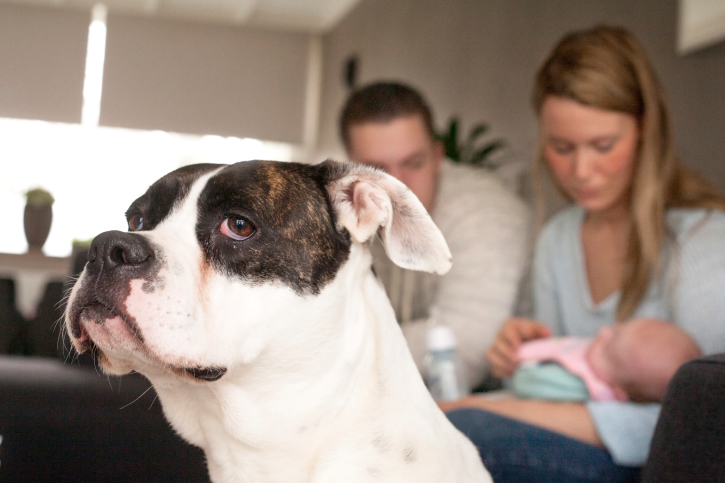
Bringing Baby Home (to the dog)
There are many life events that your dog may enjoy with you – graduation, marriage, first home, and bringing home babies. Dogs are an important part of children’s lives. Dogs teach children empathy, responsibility, balance and unconditional love.
However, it is important to remember that dogs and children are different species and it is the responsibility of the adults and parents to make sure that children and dogs know how to coexist. Most serious dog bites in the US happen to children between the ages of 5-9 years old, however babies are especially vulnerable. A baby can be confusing to dogs that have not met one before. Babies smell, sound and move different than adults.
The below are some bullet points to consider and remember when introducing your new baby to your fur baby:
- Dogs may notice the change in attention the baby receives and if your dog has a problem being dominant, territorial, aggressive or obsessive – special care and precaution must be exercised. Consult with your Sit Means Sit trainer to determine the best approach for your family.
- Start early – take the 9 months to prepare your dog for the babies arrival and condition the dog to respect the baby as a leader; and if he doesn’t already, make sure the dog respects you as leader!
- Start by acting a bit more nonchalant to your dog early, even if it is difficult. Do not let your dog shadow you everywhere around the home. If your dog normally sleeps in bed with you, start crate or dog bed training. Set rules about what furniture he is allowed on and let him know the baby’s room is off limits.
- Practice walking your dog with the stroller. Sometimes the sound or motion can disturb or confuse them. Use A LOT of praise/treats for them walking calmly with the stroller.
- When the baby arrives, start by bringing home a blanket or clothing with the baby’s smell and introduce it to your dog – this allows your dog to “meet” the new member of your family. Don’t rush this. Start by having your dog across the room in a sit and ask him to come closer to it – but not closer than you would want the dog to the baby. The dog must remain calm. Redirect nervous or excited energy around the scent.
- When the baby comes home, introduce the dog to the baby inside the house. When possible – start the dog outside and once the baby is in and settled, invite the dog in.
- Make it clear that this is your and the baby’s house – not theirs.
- Introduce your dog to the baby in stages – start from across the room, and then closer and closer. Making sure that YOU are calm is the key. Communicate to the dog with your body language that the baby is an extension of you. This is one reason it is so important your dog trusts and respects you far before baby comes home.
- As your baby grows it is important to teach your child how to interact with dogs – how to touch them, look at them and play with them.
- Never leave a dog with a baby or child alone.
- Do not leave your dog around a child learning to crawl or walk or children who are full of energy.
- Utilize private training with your Sit Means Sit trainer or group classes to help show your children how to interact with dogs.
- Call your Sit Means Sit trainer with questions or for a “bringing home baby” lesson as a follow up to their training.
- Remember to always be calm with your dog around the baby – your dog knows your mindset better than you do most often!
- Enjoy the miracle of having children and teaching them the joy of responsible dog ownership!
Always remember that your Sit Means Sit Trainer is a phone call or email away – we are here to help!
